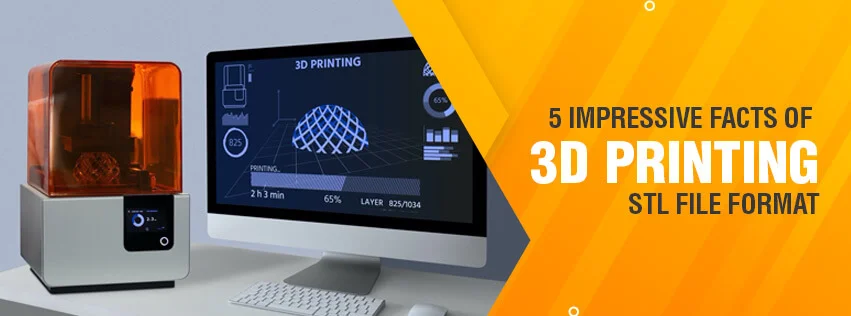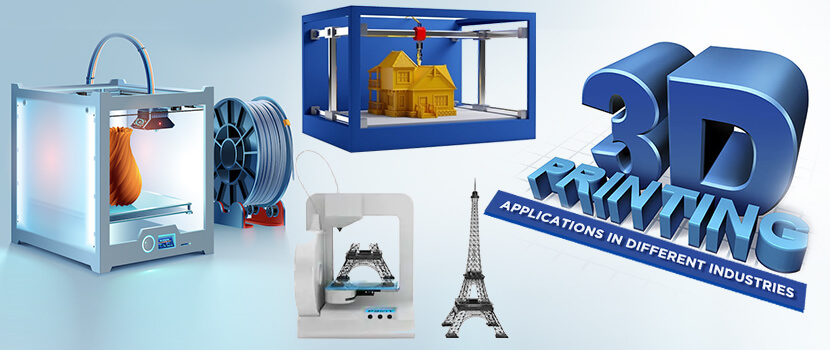Understanding the 5 Most Impressive Facts of the 3D Printing STL Format
STL or Sterolisthic files have become synonymous with the 3D printing industry ages ago. STL, which stands for "Standard Triangle Language", is one of the most common file formats of 3D printer models.

The 3D printing industry has grown strongly in the last 3 years. We know you are already familiar with the term "STL file format," but you probably didn't know some of its amazing facts until now.
In this article, we discussed the 5 amazing facts you probably didn't know about STL files before.
What is an STL file?
STL file is a three-dimensional model of a digital object. This prepares the object for printing with the right software and rendering program.
The STL format was originally developed back in 1987 by the Albert Consulting Group for 3D Systems 1987. It is the standard file format for most FFF and SLA 3D printers. Also, it's crucial to know how to export your design from a modelling software and convert it to an STL file format before printing.
For example, small items such as jewelry will take less time to get printed than large items such as furniture. There are also practical considerations while designing objects. For example, avoiding sharp edges or thin walls as these can't be printed on certain machines.
Nowadays, the term has become synonymous with all 3D print files. Most popular CAD programs facilitate the seamless export of these files. Many people also use the PNG to STL convert option to change file formats into the desired STL format.
5 facts about STL files one must know
3D STL files are an unstructured version of the object, which works for complex and round-shaped objects.
Let's dive in to find some amazing facts about this 3d file format, which you probably didn't know:
An STL file is made of triangles
Yes, an STL file is made of triangles! The three-sided shape is the most common for an STL input because it creates a surface with no gaps or holes. For example, if you have an object with two distinct sides, it's likely to be composed of 2 separate meshes. One on each side and connected at the edges by triangular surfaces called "patches".
That’s why it comprises small geometric shapes known as "triangles”. They're used in 3D modeling because there aren't any straight lines. Implying all elements can fit together smoothly without having large gaps among them.
Also, it is quite simple because it contains only basic information and is compatible with all software applications.
-
Little has changed since its inception
Some still assume that STL files are new, but that is untrue. On the contrary, 3D STL files have been existing since the 1980s. It was designed by Albert Consulting Group in 1987 and is one of the most common formats used for commercial 3D printers.
Now, STL is still famous for being used in commercial as well as, consumer-grade 3D printers.
-
Who uses STL files? Almost everyone!
The STL file format is often used to design 3D objects in computers and drawing programs like Autodesk Inventor or Alias. The format is typically accepted worldwide and is well-known for 3D printers.
Machine makers are already trying to find the universal medium to make it possible for all machines in this industry to work together. But so far, STL remains one of the most popular formats as opined by 3D professionals. Owing to its simplicity and compatibility with different software like, Meshmixer and Netfabb.
-
It is designed to describe surface geometry
Currently, STL files are crucial for most 3D print files. The geometry can be described with intricate detailing using the STL file. You can also create your desired print quicker and easier than ever before.
In addition, you don't need any instruction for changing color or texture, which is otherwise used in other CAD files. So, the instructions are only for surface geometry, making it even more popular.
-
ASCII and binary versions
The standard STL format is ASCII-based and has a large file size. To save space and improve processing time, binary versions of the files are available for download.
The binary version can support up to 80 characters and is considered smaller than ASCII. That's why their smaller size is preferable for 3D printing models.
What are the limitations of STL files?
STL is the file format that 3D printers use to interpret and create 3D objects easily. They are limited only by the user's skill at constructing 3D models using the design software.
A significant limitation of 3D STL files is their accuracy, as they can come out fuzzy or "grainy". However, this problem is easily addressed using higher-resolution mesh data before printing. And since it's not an ideal way to produce a more authentic-looking object, limit printable STLs to CAD drawings or low-resolution models for prototyping purposes only.
Another limitation of 3D printing STL files includes the gaps and overlaps generated while joining the surface models if drawn incorrectly. Also, other information, such as texture, color, or internal structure, may not be included in the STL files.
To ensure you don't face any problems while working on the 3D models, understand the special rules for STL files. Such as vertex to vertex rule, all-positive octant rule, or the orientation rule, etc.
Conclusion
Overall, STL files are an important part of all 3D printing applications. Therefore, knowing some facts about STL files is essential if you want to work on DIY 3D printing projects. If you are unsure of the outcomes, it is better to take help from professional 3D design services experts in creating 3D print-ready files.
With this guide, we hope you understood the professional framework of STL, and what is interesting about this format. If you would like to know more about STL-related 3D design services, contact us for more information.




